Along with the start of the new EFL season, we also witnessed the return of the EFL Cup with many big names hosted interesting ties on the day. One of the clashes that attracted the attention of fans was between Luton Town and Ipswich Town. Just last season, they were at different ends but also different situations.
Luton had a very successful season under Nathan Jones and Mick Harford as their attractive style of play contributed to their back-to-back promotion. This season, with a new manager in Graeme Jones on the sideline and new additions, they started their journey in the Championship in a very positive way.
Meanwhile, Ipswich were struggled to fight for their spot but couldn’t survive the cut. After a busy summer that saw many of their key players left and also new signings that were brought in by Paul Lambert, they are ready for the League One. But their travel to the Kenilworth Road wasn’t as they wanted. Goals from Lloyd Jones, Elliot Lee and Andrew Shinnie secured Luton a Second Round clash with Cardiff City.
This tactical analysis will provide an analysis of how Luton dominated Ipswich at their home stadium. Meanwhile, using statistics, we will analyse what Lambert could have done better with Ipswich’s tactics that might secure a more positive result over Luton’s tactics.
Lineups
Entering this match, Jones intended to rest his first-team players for the Championship campaign ahead. He allowed the players who couldn’t have a lot of minutes in the season to play and included most of their new signings in the squad.
Luton lined up in a 4-3-1-2 that saw Luke Bolton and Brendan Galloway played as wing-backs. James Bree completed the back three as faced the side that he went on loan at last season. Covered the central area for the home side was another loanee in Izzy Brown, Luke Berry and Andrew Shinnie. Meanwhile, Elliot Lee positioned himself just below the strikers Kazenga LuaLua and Harry Cornick.
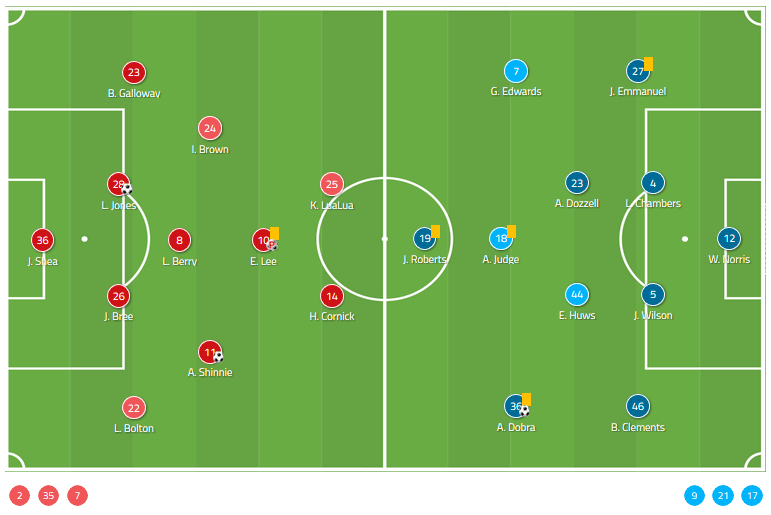
Ipswich also had two of their new signings started in the 4-2-3-1 formation with loanee Will Norris started in goal. James Wilson paired up with Luke Chambers as centre-backs while Bailey Clements and Josh Emmanuel completed the back four. Andre Dozzell and Emyr Huws screened in front of the defence and Alan Judge played just behind striker Jordan Roberts.
Luton’s style of play
Luton have had a very good game in terms of building attacks and creating chances towards Ipswich’s goal. In total, there were 24 chances created which nine of them found the target. Their overall xG rating was 2.21 and they have overperformed it by scoring three goals during the game.
When they were in possession, the players usually formed a four-man build-up using Berry and Shinnie’s positionings. As a half-back, Berry tended to drop in between the centre-backs and or he could shift a bit farther from the passing triangle. Luton used this build-up strategy in their League Two’s champion season with Justin mirrored Berry’s movements.
Shinnie came deep from his position and formed a passing triangle with Jones and Bree and he had the license of dribbling with the ball high up the pitch. Against Ipswich’s pressure, this was when Berry came in handy. His farther position allowed the centre-backs to pass the ball out of the overloaded area and also provided a safe passing option.
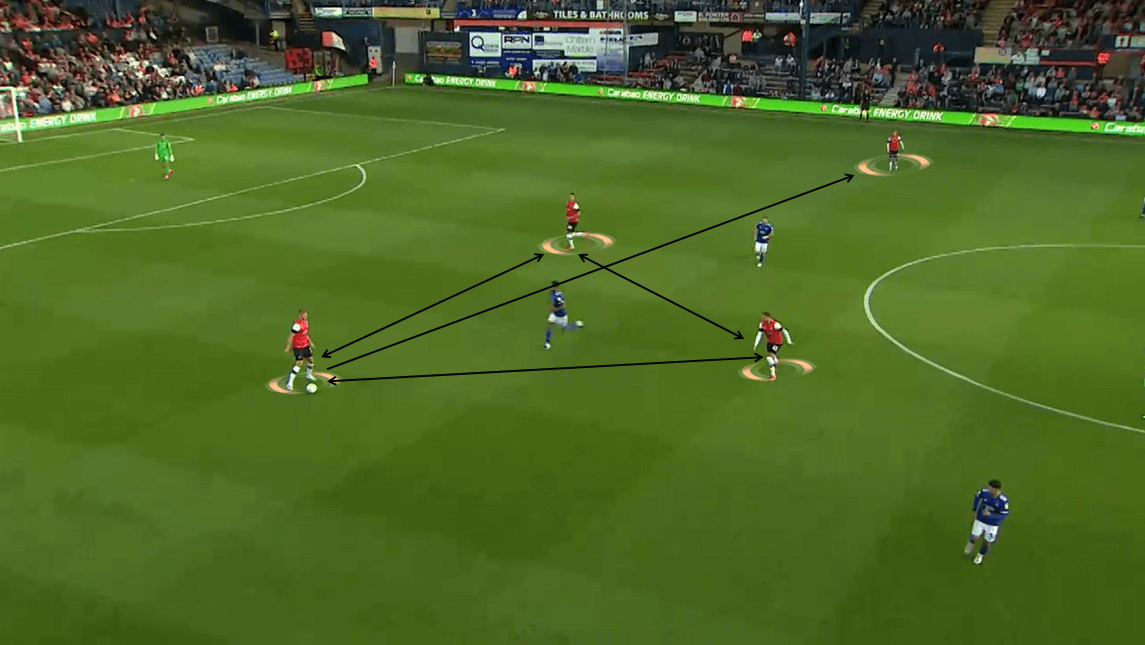
During the build-up, two wing-backs could also overlap into the opposition’s half and provided supports in Luton’s attacks. While Galloway was an attacking left-back who could make crosses into the box, Graeme played Bolton in a slightly different position from his preferred position.
Naturally, the Manchester City loanee is a winger that tends to dribble with the ball or cut inside and created chances for himself. Since the striker’s roles were already occupied by another two wingers, LuaLua and Cornick, the manager wanted to test him in the right-back role. He had a very average match in both defence and attack, winning four out of his five defensive duels and completed four dribbles.
In the transition process, Luton relied on short and quick combinations to bypass Ipswich’s aggressive defending. Whenever a player had the ball, at least one would come short and offer a passing option. Immediately as the ball left their feet, they found spaces to move in and once again became a potential receiver.
Furthermore, the teammates surrounded the ball-carrier could use his off-the-ball movements to attract the opposition’s defenders. In the shot below, when Brown controlled the ball, LuaLua cut inside from his position and dragged along Emmanuel. This created spaces inside the left flank for Lee to move in. Eventually, the former West Ham player received the ball from Brown and threaten Norris’ goal.
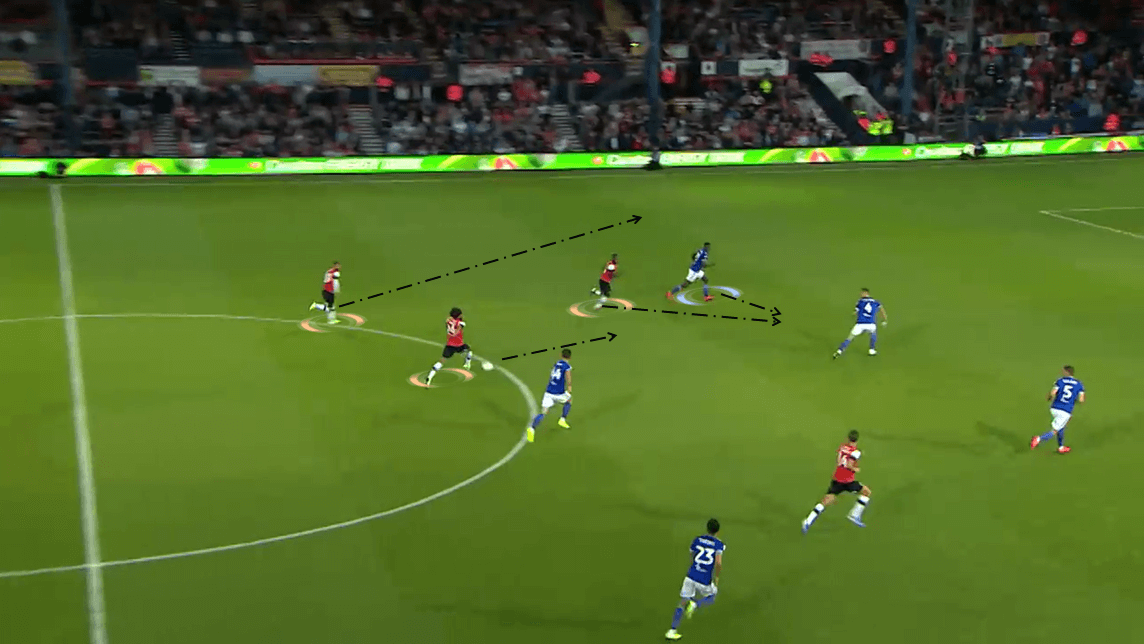
All of Luton’s goals in this match came from set-pieces, including Jones’ opening goal. After the corner was cleared, Brown picked up the ball outside of the box. There, he found the young centre-back who was unmarked. With a lofted ball over Ipswich’s defenders, Jones was in a free state to head the ball and opened the game for Luton.
Lee’s second goal came from a penalty that created by Shinnie. And eventually, the former Birmingham midfielder got his name on the scoresheet through a free-kick inside the second half. Although this showed the lack of goals came from open play, Luton have made the most out of their set-pieces. They need some improvements in converting the chances from positional attacks, but this is an attacking method that Luton need to capitalise this season.
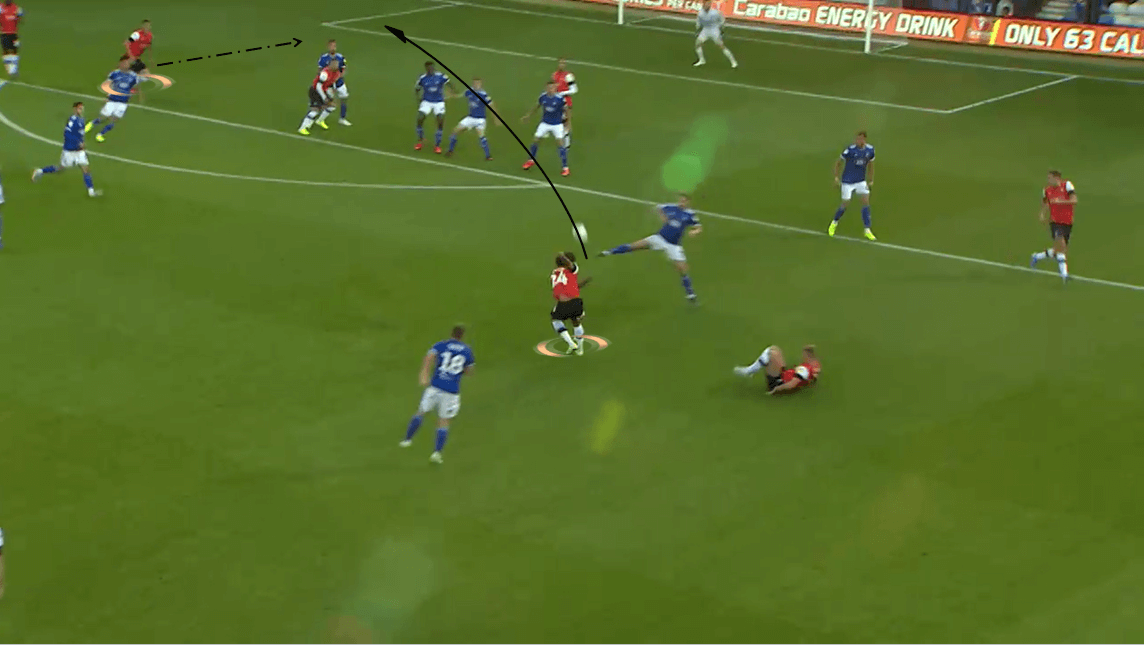
Defensively, the players had the tendency of regrouping into the 4-3-1-2 defensive structure when the ball reached the halfway line. The strikers formed the first line with Brown and they usually put pressure on Ipswich’s midfielders. Their task was to intercept any through balls or passes heading into the final third.
Positioned on the edge of the third was three central midfielders. With the supports from the attackers centrally, they have the license of stretching wide and filled in the half-spaces. This allowed Luton’s shape to shift the structure more flexible and if Ipswich switched their attacking direction, they could create numerical superiority to recover possession.
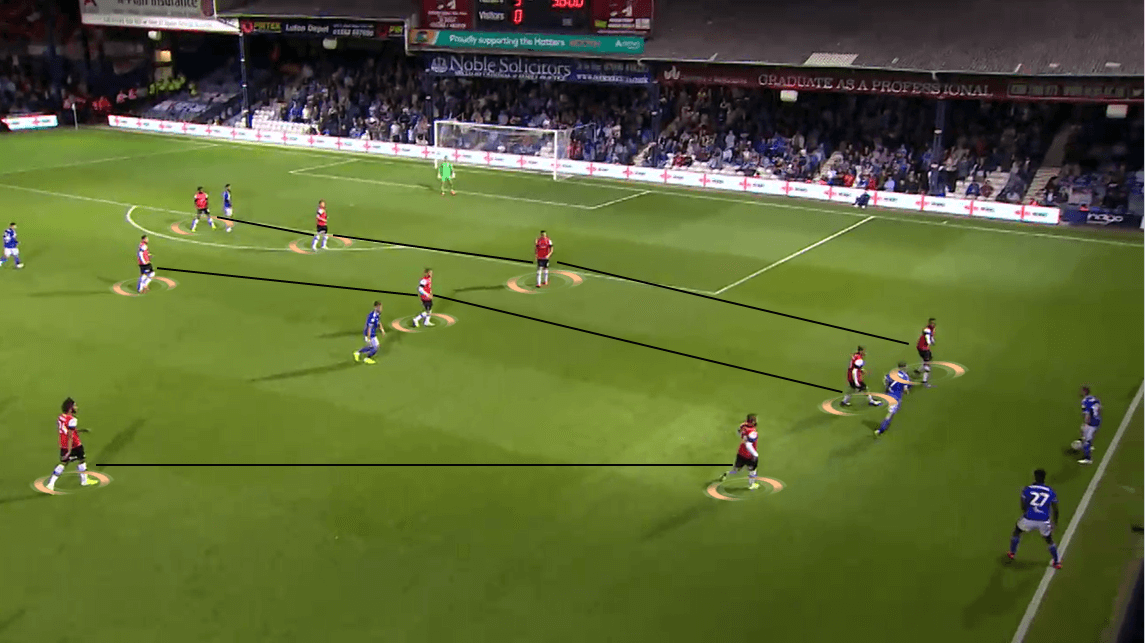
The last line was the defenders as they stayed compact in front of the box. If necessary, one of the defenders could move out wide and join the pressing area. With three players inside the wide-area, they could match Ipswich’s numbers when they attempted to attack down the flanks. This required his teammate to move across and covered the spaces left behind.
This shot below demonstrated one of the similar situations. Ipswich attacked the right-hand side with right-back Emmanuel, right-winger Gwion Edwards and attacking midfielder Alan Judge. Three Luton players stepped out from the structure and remained in a straight line. They pressed Ipswich to the byline and used it as the fourth player to involve in the press. Meanwhile, Huws tried to come short and offer a passing option but he immediately being marked by Berry.
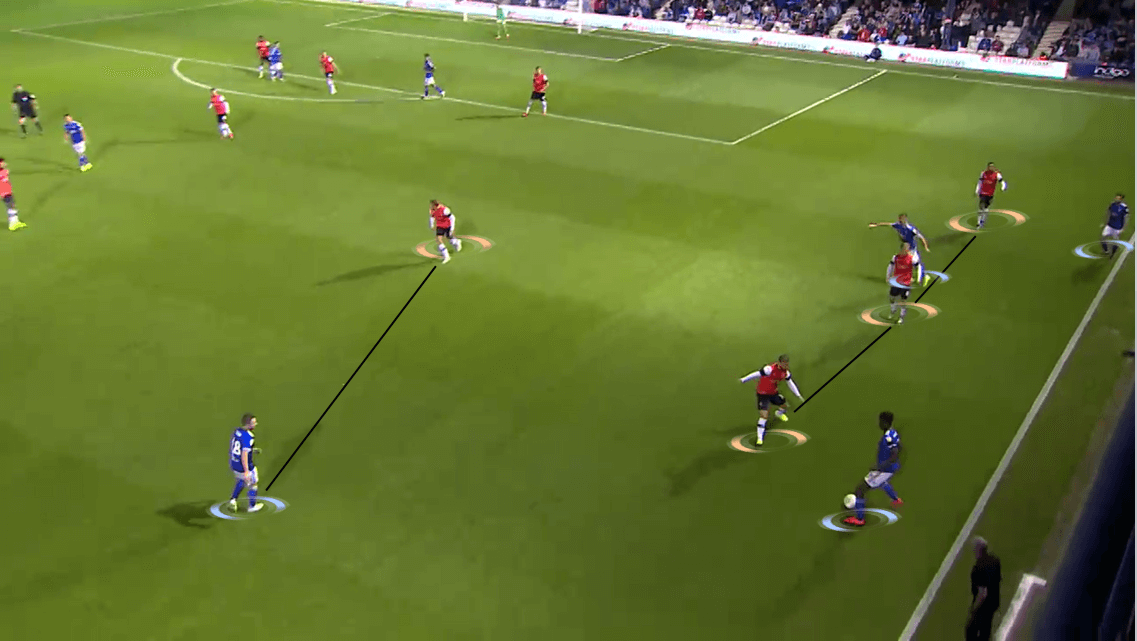
High up the pitch, they formed a pressing structure that looked similar to a 4-1-2-1-2 formation. At times, when Lee moved into the spaces between two strikers, the shape turned into a 4-3-3. They aimed to put pressure on Ipswich’s build-up and prevented them from circulating the ball into their half.
The strikers usually followed Ipswich’s defenders and marked the ball-carrier’s possible passing options. They left the ball-carrier with little spaces and forced him to make a backpass to the goalkeeper. In the second half, Lambert’s side had to change the way to build their attacks because of the pressure came from Luton.
Supported the strikers were three central midfielders as Brown and Shinnie occasionally moved slightly higher than Berry. The former Cambridge midfielder played in the role of a half-back, which required him to screen the defence and stayed deep to sweep through balls and passes. Meanwhile, the former two acted as mezzalas and at times playmakers. They linked up the play and connected the strikers in both the team’s defence and attack.
These two positioned themselves behind the spaces between Lee and the striker with the responsibility of blocking potential areas for passes. They moved flexibly when Luton pressed and were able to create overloads when necessary.
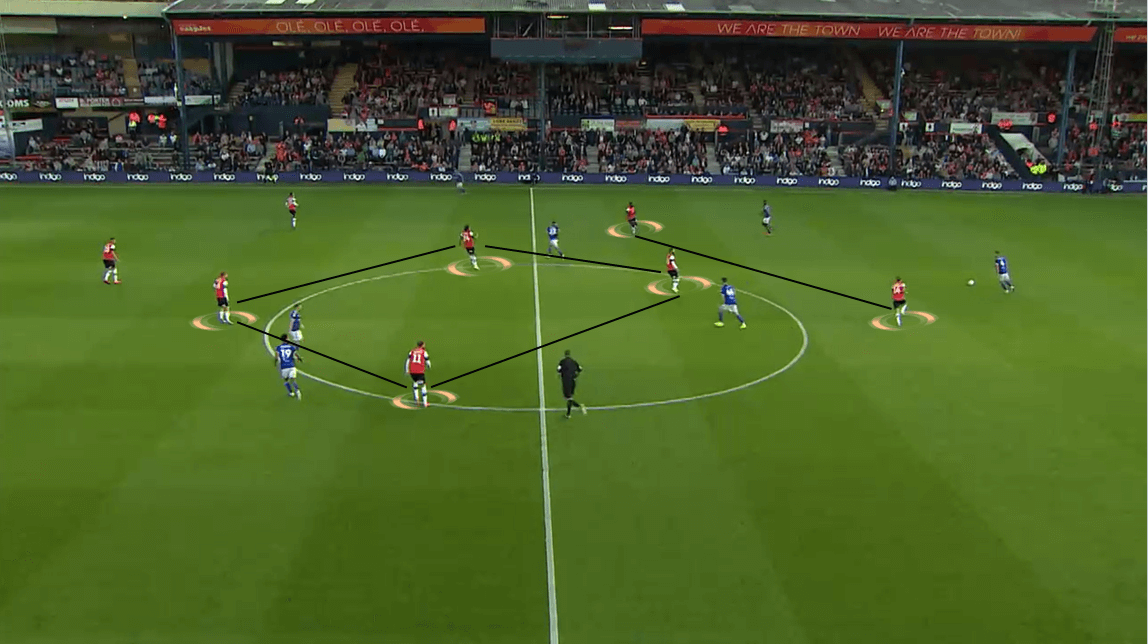
Ipswich’s style of play
The away side entered this game not being rated as an underdog, but they adapted a negative style and were focused on defence. To counter against Luton’s attacks, they formed a wide 4-4-1-1 defensive structure with two separate defensive lines.
Four midfielders positioned themselves on the edge of their defensive third and constantly received supports from Judge. Based on the shape, they usually kept a sufficient distance between each other while stretching wide. With Luton’s attackers had the tendency of capitalising spaces in between the channel and between players, they were required to have positioning discipline to prevent that from happening.
Meanwhile, the defensive line stayed a bit more compact and filled in the central area and the half-spaces. Their responsibility was to defend the box and narrowed the possible spaces in that channel. That meant they could move flexibly out of their position and close down one of the attackers.
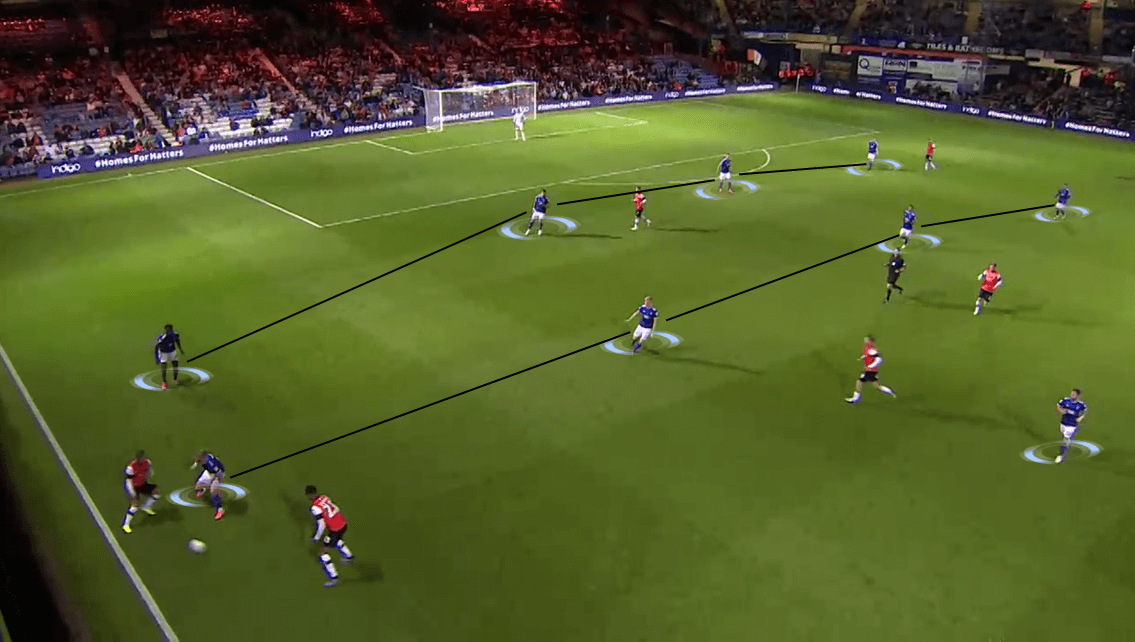
Upfront, they adapted a man-oriented press with a very aggressive attitude. The attackers constantly put pressure on Luton’s build-up and prevented Bree and Jones from passing the ball. Each player was responsible for one of the opposition’s player, they had to follow him until the build-up sequence ended or managed to recover possession.
At the start of the game, their pressing intensity was still conservative as they capitalised on heavy touches or misplaced passes. One of those situations would allow them to immediately start a counter-attack with at least three players and approach Shea’s goal. But when Luton scored two goals, the urgency was put on them to recover the ball as soon as possible. Some of the players chose to be aggressive in tackling and it resulted in many unnecessary fouls inside Luton’s half.
During the same period, when they regrouped and defended the box, the players were also required to get stuck in. Again, unnecessary fouls near their 16-yard box were something that they couldn’t avoid if they want to win possession. Lee’s penalty also came from a sloppy foul from Emmanuel and Shinnie’s free-kick goal was the result of Dozzell’s tackle.
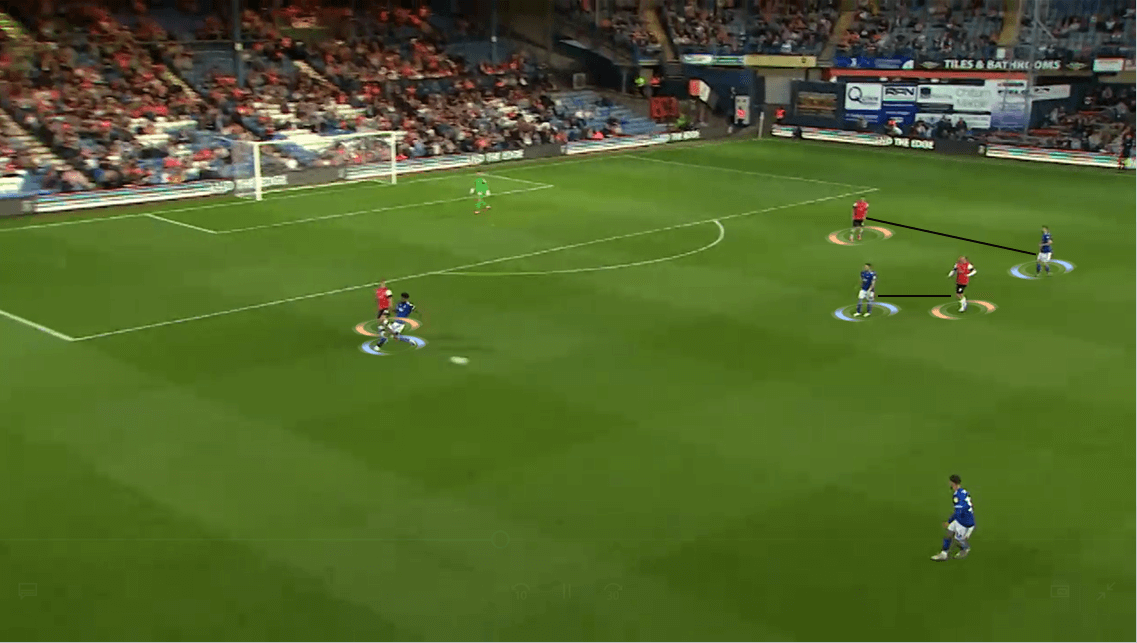
Besides from the fact that Luton capitalised on Ipswich’s fouls, they also countered Ipswich’s press using their four-man build-up shape. When the ball-carrier had possession, at least two players would close him down and attempted to win the ball. Inside that passing triangle, one of the home side’s player would move into the ball-carrier’s sight.
In the shot below, Shinnie was the player who helped Berry recycled possession. Again, the player’s farther positioning came in handy. When Shinnie received the ball, he didn’t wait for Ipswich attackers to close him down. A long pass was immediately made towards Jones and allowed Luton to continue the build-up. With four players recovering from the press, the away side have lost a few names that could retreat to their defensive shape.
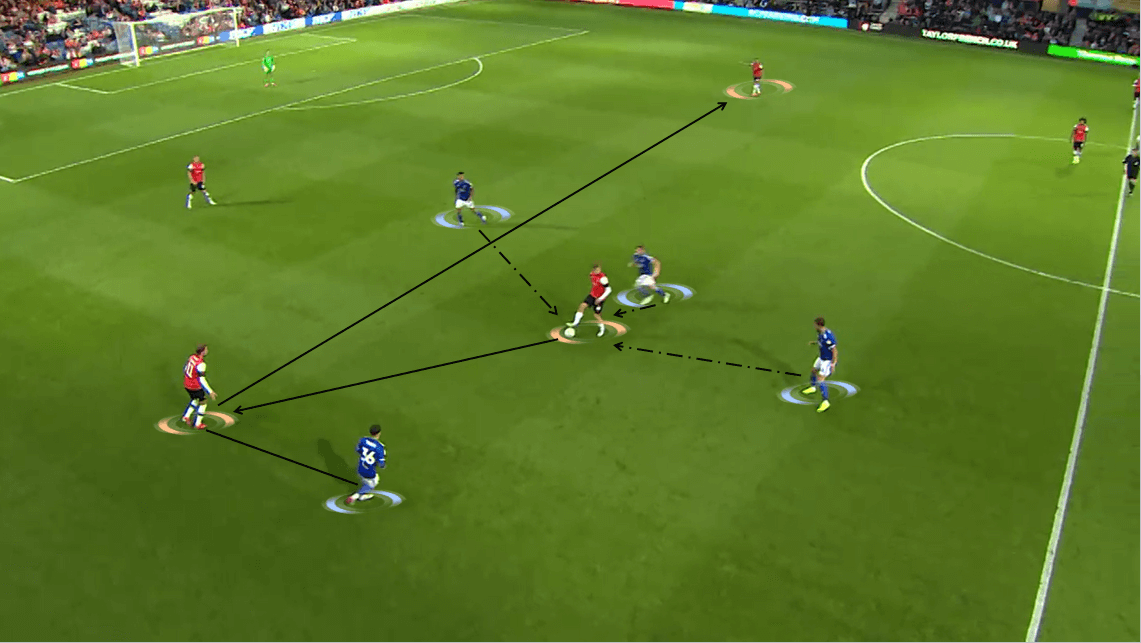
When they had the ball, they were also struggled to create chances towards Luton’s goal. During the build-up, their 4-2-3-1 divided into two separate groups. The first group, as shown below, consisting of the defenders and two central midfielders.
Acknowledging about how Luton pressed, they widened their space but still able to keep their teammates in a sufficient distance. This kept the risk of their passes as low as possible while winning numerical superiority over the home side. With at least four passing triangles (depended on the ball-carrier) were created, there should be no problem for their ball circulating.
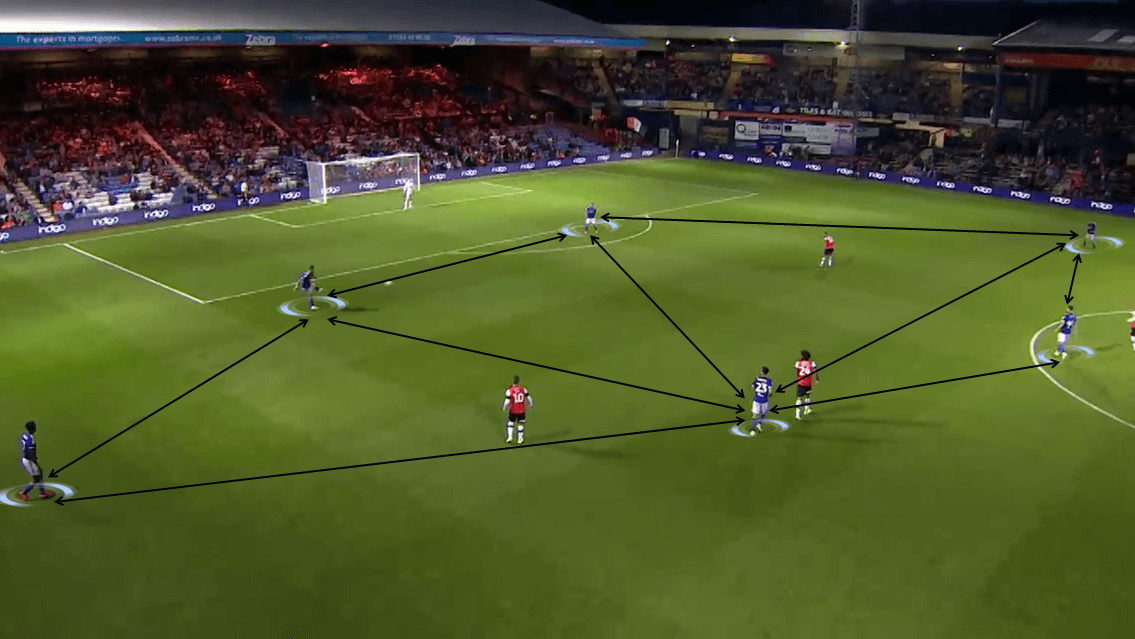
But on the other side of the pitch, they lacked the precision needed to force Shea to show his ability. They could barely create any attempts on target inside the first half with most of them were blocked or went wide. The second period saw Luton lowered their tempo down and Ipswich were able to approach Shea’s goal in more occasions.
Dozzell and Roberts all had their chances on goal with the former Crawley’s two chances were rated above 0.1. His second chance reached Ipswich’s xG peak with 0.21, but the side have to wait nine minutes later to get their consolation. From a solo effort by Armando Dobra, the youngster dribbled from the middle third into the area near Luton’s box. His shot was deflected and hit the bottom right corner and eventually sealed the game.

Conclusion
Inside the first half of the match, things were a little bit different as both teams approached the game with a positive reaction. Luton and Ipswich all had their chances and were able to do what they intended, but Jones’ header before the tenth-minute mark changed the game.
Both teams had their own problem but for Luton, they have had a very good game. Graeme Jones had his opportunity to test some of the new signings and allowed them to gain match fitness for the upcoming Championship season. With their first win of the season, they hope to build on this when they return to the league.
Ipswich, on the other hand, still struggling to recover from what they have finished last season. They were totally dominated by Luton and couldn’t execute the plans that Lambert had in the first place. Another downside of them was they committed fouls too often, leaving the tactical quality of the match being dragged down. Ipswich are a very good side, some might admit, what they need now is to find a style of play that fit them the most as they bound out from the EFL Cup.

If you love tactical analysis, then you’ll love the digital magazines from totalfootballanalysis.com – a guaranteed 100+ pages of pure tactical analysis covering topics from the Premier League, Serie A, La Liga, Bundesliga and many, many more. Buy your copy of the August issue for just ₤4.99 here.

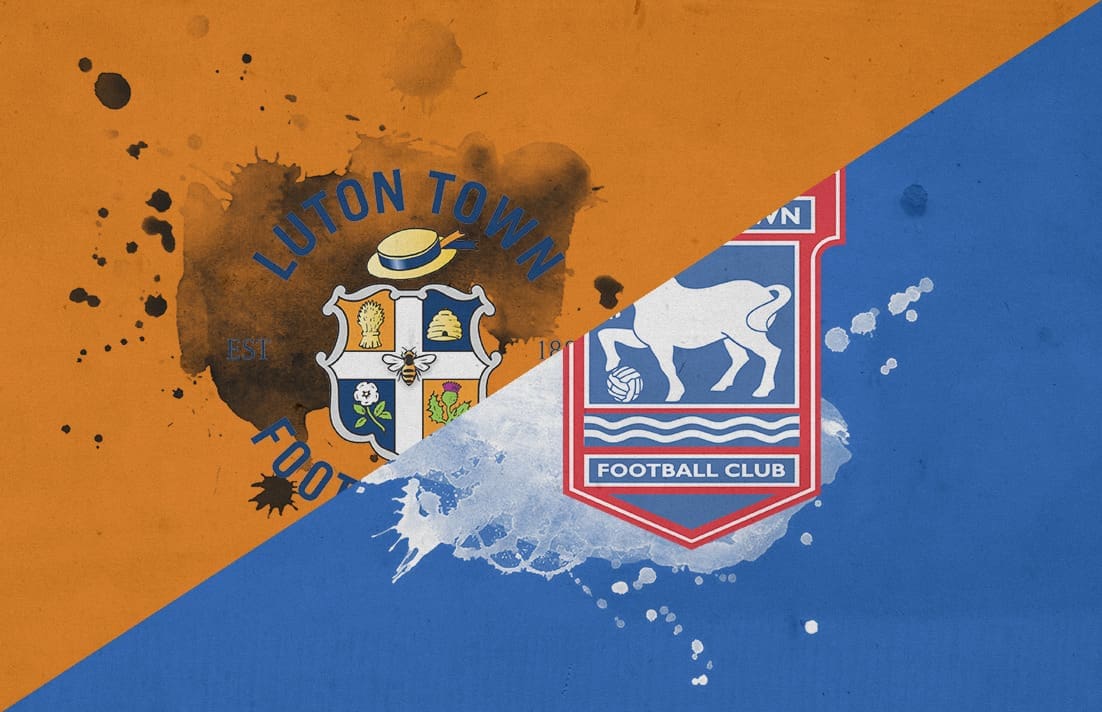
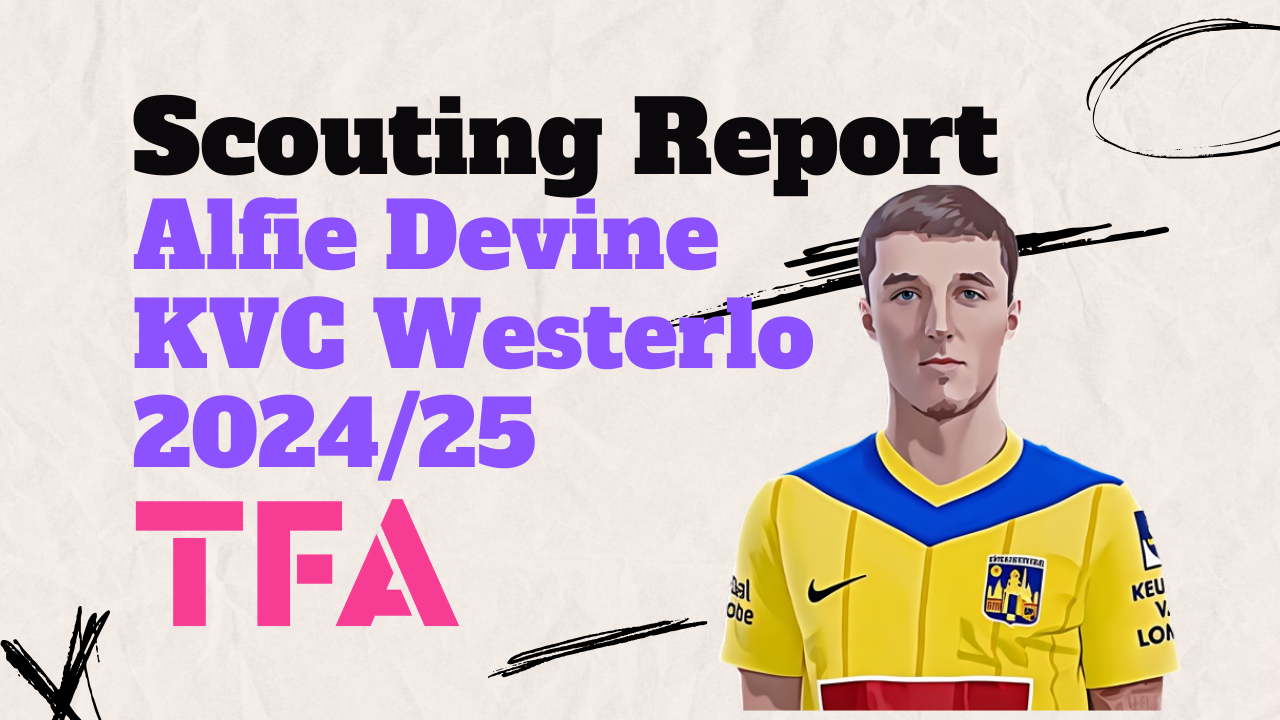
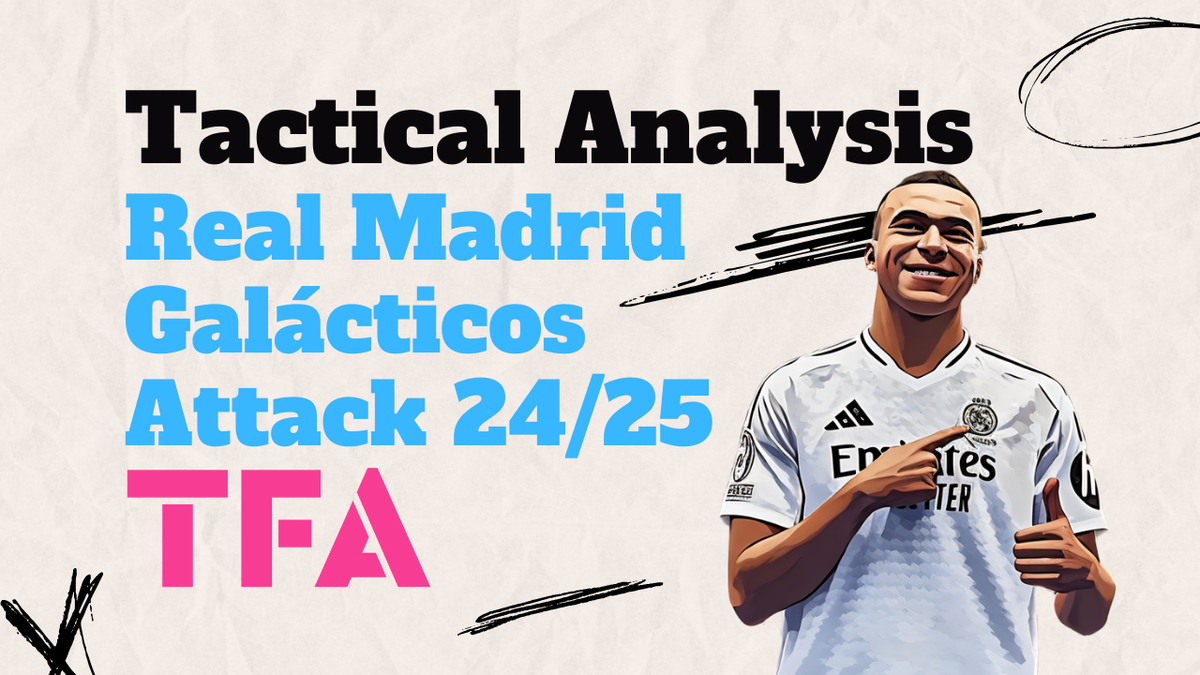
Comments